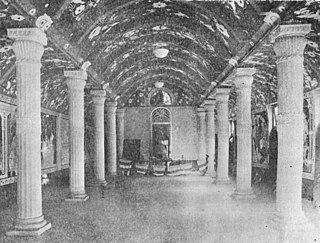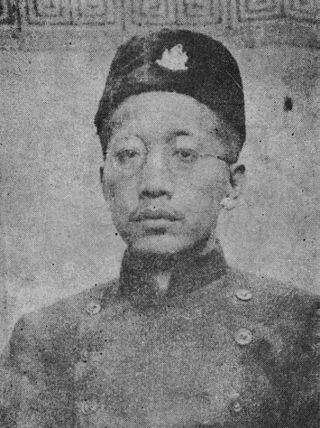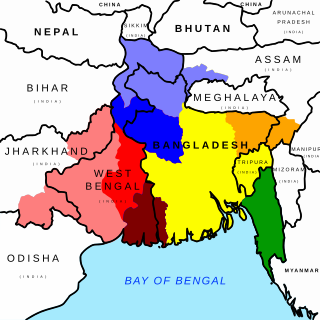This article needs additional citations for verification .(January 2021) |
| Total population | |
|---|---|
| 1.2 million[ citation needed ] | |
| Regions with significant populations | |
| | |
| Languages | |
| Chittagonian | |
| Religion | |
| Theravada Buddhism |

Barua (Bengali : বড়ুয়া, Boṛua; Arakanese: မရမာကြီး),is a Bengali-speaking Indo-Aryan ethnic group native to Chittagong Division in Bangladesh and Rakhine State in Myanmar, where they are known as the Maramagyi or Maramagri or particularly the Magh Barua. [1] According to Arakanese chronology, the Barua Buddhists have lived there for five thousand years. [2] Another derivation of 'Barua' is 'Baru' and 'Arya' meaning great arya. They are commonly identified by their last name, "Barua". Barua is derived from "Baru" meaning "great" and "ua", meaning "noble rulers".In Myanmar, the Barua is classified as one of the seven groups that make up the Rakhine nation.The physical characteristics of Barua (Marmagyi) people are unmistakenly Mongolian, their stature is low, the face broad and flat, cheekbones high and wide, nose falt and bridgeless,and eyes small with eyelids obliquely set.Their list of favourite foods invariably includes shnutki machhor dry fish, sea fish and spicy food prepared with lots of oil and chilli. From the different kinds of shnutki an indication of their origin can be identified. For instance, according to multiple respondents the Siddala and Hangor shnutki (dried sea fish) is liked mainly by Baruas who are closely connected to the Arakanese community. The primary scripture of Barua Magh Tribal Community, the Tripitaka was written in the Pali language. After Barua women marry they wear vermilion and conch-shell bangles as marriage symbols and as a sign of their unavailability to men. The present Barua Buddhists of Chittagong are from Arakan roots. They migrated to Chittagong some four or five hundred years ago. Before getting planted in that country they were from different groups and not from one composite group. And name Magh has been derived as corrupted form of appellation Mang or Meng.Use of name Mang or Meng was widely prevalent in Chittagong among the ancestors of Buddhist communities now using the name Barua.
Contents
Chittagong was formerly known as "Chaityagrama" or "town with Buddhist shrines". [3] The region attracted Chinese Buddhist visitors in the 7th century. In 1929, in Jhewari village a hoard of 61 Buddhist images from 9th and 10th century was found. [4] It was a centre of Buddhism in the 10th century. [5] Taranatha mentions a monastery named Pinda-Vihara at Chittagong where the custom of wearing pointed caps originated. [6] The scholar Vanaratna (1384–1468 CE) who is considered the last Indian Buddhist Pandit in Tibet, [7] was born in the Chittagong district. [8] He studied in Sri Lanka, parts of the old heartland of Buddhism in present-day Bihar including Bodh Gaya, Tibet and then he settled down in the Kathmandu Valley in Nepal. He wrote in Sanskrit and Apabhramsha. Chittagong region is one of the two regions of the Indian subcontinent where Indian Buddhism has survived without interruption. They insist that they came from the Āryāvarta or the country of the Āryans which is practically identical to the country later known as Majjhimadesa or Madhyadesa in the Pali texts. [9]
A Magh king, Jaychand, ruled the Chittagong region in the 16th century. [10] There are periods in history which are known as the dark days and Buddhism or Buddhist history too had to pass through this period in India. Starting with the Muslim invasion when Ikhtiyar Uddin Muhammad bin Bakhtiyar Khilji with his marauding soldiers plundered their way to the throne of India, it was a time when the Buddhist Viharas were destroyed and monks fled the place to escape the brutality and later the Brahmins too caused immense damage to Buddhism by killing the Buddhist monks and destroying the very fabric a Buddhism. By the advent of the nineteenth century, Buddhism was almost extinct in the land of its birth save except for a few pockets where it survived with the influence or migration of Buddhist tribes from Myanmar, Thailand and Chittagong (now in Bangladesh)















